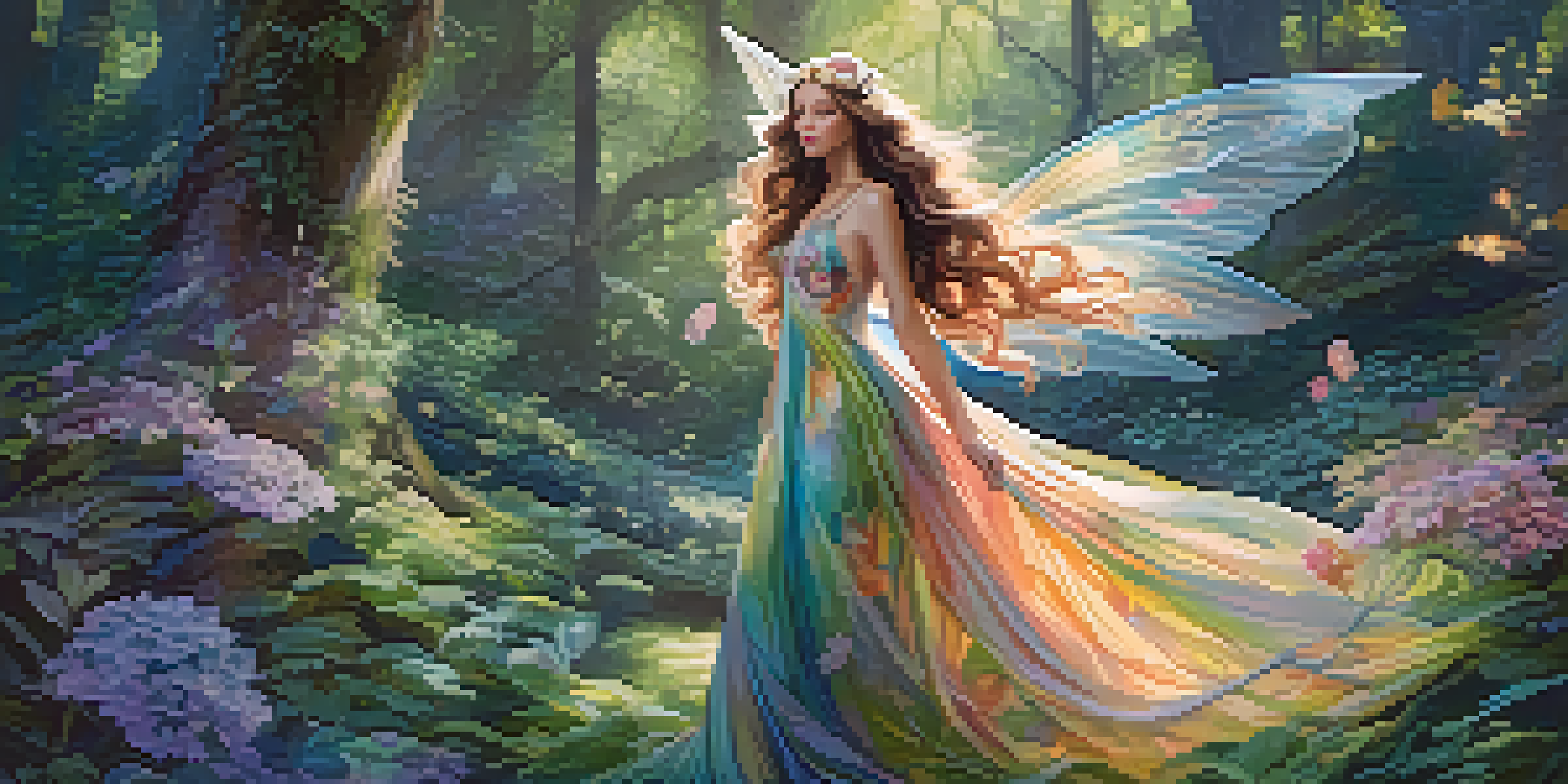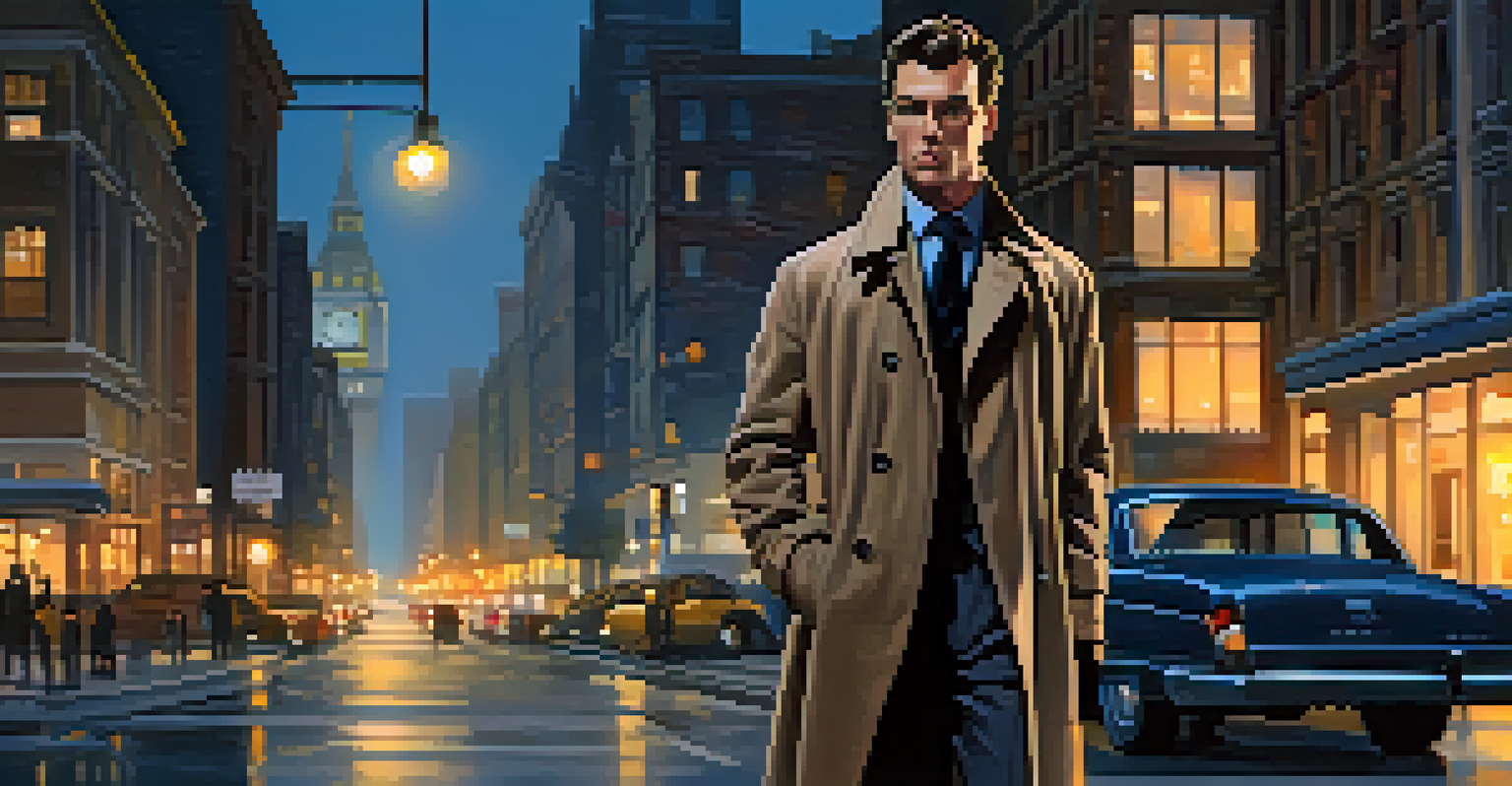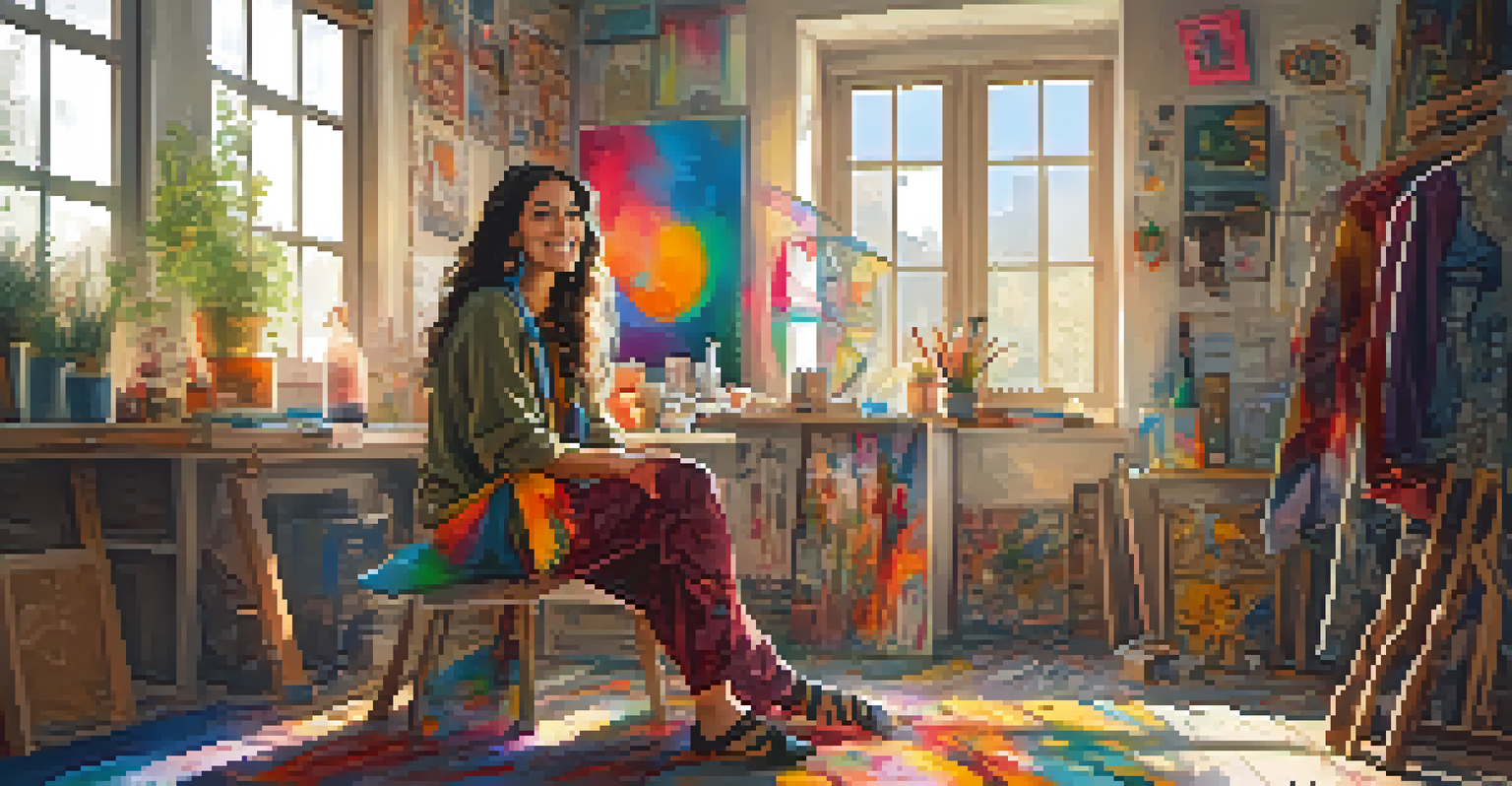Creating Character Designs Through Fashion Illustration

Understanding Fashion Illustration Basics
Fashion illustration is more than just pretty drawings; it's a unique art form that captures the essence of clothing and style. At its core, it combines aesthetics with creativity, often showcasing garments in a way that tells a story. By understanding the basics of this art form, artists can learn to express characters' personalities through their clothing choices.
Fashion is the armor to survive the reality of everyday life.
The use of color, line, and form in fashion illustration can evoke emotions and set the mood for a character. For instance, a bright, vibrant palette might suggest a lively and joyful personality, while darker tones could hint at mystery or sadness. This understanding allows artists to strategically choose elements that align with their character's narrative.
Incorporating these foundational aspects into character design helps establish a visual identity that resonates with the audience. Whether it’s a whimsical fairy or a brooding detective, the right fashion illustration can breathe life into a character, making them relatable and memorable.
Finding Inspiration in Fashion Trends
Fashion is ever-evolving, and keeping up with trends can provide a wealth of inspiration for character designs. Designers often look to runway shows, street style, and even vintage fashion to spark their creativity. Observing these trends can help artists understand what styles resonate with audiences, making their characters more relevant and appealing.

For example, the resurgence of 90s fashion has led to the creation of characters that reflect this era's vibe, blending nostalgia with modernity. By integrating these elements, artists can develop characters that feel fresh yet familiar, striking a chord with viewers. This approach not only enhances the character's design but also connects them to cultural moments.
Essence of Fashion Illustration
Fashion illustration merges aesthetics and creativity, allowing artists to express characters' personalities through clothing.
Additionally, trends can serve as a backdrop for character development. A character dressed in oversized clothing may project a laid-back attitude, while someone in tailored suits could exude confidence and ambition. Thus, fashion trends are not just about aesthetics; they offer insights into a character’s lifestyle and values.
Using Silhouettes to Define Character
Silhouettes play a crucial role in character design, as they are often the first thing viewers notice. The shape and outline of a character can convey a lot about their personality and story arc. For instance, a character with sharp, angular lines may suggest strength and aggression, while soft, rounded shapes could imply gentleness and approachability.
Design is not just what it looks like and feels like. Design is how it works.
When creating character designs, artists can experiment with various silhouettes to find the one that best represents their character's traits. This exploration is akin to sculpting; artists carve out the essence of their characters, allowing viewers to grasp their identities at a glance. A well-defined silhouette can make a character instantly recognizable and relatable.
Moreover, silhouettes can be enhanced through clothing choices. For example, a flowing gown can create an ethereal silhouette for a fantasy character, while a fitted leather jacket can give a rebellious edge. By thoughtfully combining silhouette and attire, artists can effectively communicate their character's vibe and story.
Color Psychology in Character Fashion
Color psychology is a powerful tool in character design, influencing how characters are perceived by the audience. Different colors evoke distinct emotions and associations; for example, red can signify passion or danger, while blue often represents calmness and trust. By understanding these associations, artists can choose colors that align with their character's personality and narrative.
When designing a character's wardrobe, it's essential to consider how the color palette reflects their journey. A character might start in muted tones to symbolize struggle and gradually transition to vibrant colors as they gain confidence and overcome challenges. This visual evolution can be incredibly impactful, engaging the audience's emotions throughout the character's arc.
Importance of Color Psychology
Color choices in character design influence audience perceptions and emotions, helping to reflect a character's journey and relationships.
Additionally, color choices can help establish relationships between characters. For instance, complementary colors in two characters' designs can suggest a connection or partnership. In contrast, clashing colors might indicate conflict or rivalry. By leveraging color psychology, artists can enrich their character designs and deepen the narrative.
Accessorizing Characters for Depth
Accessories are the finishing touches that can elevate a character's design from ordinary to extraordinary. Items like hats, jewelry, and bags can convey a wealth of information about a character's background, interests, and personality. For instance, a character adorned with eclectic jewelry may suggest a bohemian lifestyle, while a sleek watch could hint at professionalism and precision.
Incorporating accessories also allows for storytelling through visual elements. A character's choice of accessories can symbolize their journey, such as a locket containing a photo of a loved one representing nostalgia or a weapon signifying strength and readiness for conflict. These small details can make a character feel more three-dimensional and relatable.
Moreover, accessories can also serve as a means of contrast within a character’s design. For example, a character dressed in a pristine outfit might wear a rugged, vintage bag to reflect their adventurous side. This juxtaposition can create intrigue, prompting the audience to explore the character’s backstory and motivations more deeply.
Creating Cohesion in Character Design
Cohesion is key in character design, ensuring that all elements work harmoniously together. From color palettes to silhouettes and accessories, every aspect of a character's appearance should tell a consistent story. This unity not only enhances the character's visual appeal but also reinforces their personality and narrative.
To achieve cohesion, artists should consider the character's overall theme and how each design element supports that theme. For instance, if a character is meant to be whimsical, the use of bright colors, playful patterns, and quirky accessories can create a sense of harmony. This intentional design choice helps to solidify the character's identity in the audience's mind.
Cohesion in Character Design
Ensuring all design elements work together harmoniously enhances a character's identity and narrative within their universe.
Additionally, keeping a consistent style across characters within the same universe can foster a sense of belonging and coherence in storytelling. This approach can create a visually engaging world where characters complement each other, making the narrative more immersive and enjoyable for the audience.
Iterating and Refining Character Designs
Character design is often an iterative process, requiring artists to refine their concepts through feedback and experimentation. This phase is crucial, as it allows designers to identify what works and what doesn’t, leading to stronger character designs. Through sketching and prototyping, artists can explore various ideas before settling on a final look.
Engaging with peers or audiences for feedback can provide valuable insights that artists may overlook. Constructive criticism can highlight areas for improvement, inspiring new ideas and encouraging growth. This collaborative approach can enhance the character's design, making it more relatable and engaging for viewers.

Ultimately, the refinement process is about embracing flexibility and being open to change. As artists evolve and grow, so too should their characters. Iterating on designs not only leads to more polished outcomes but also keeps the creative process exciting and dynamic.